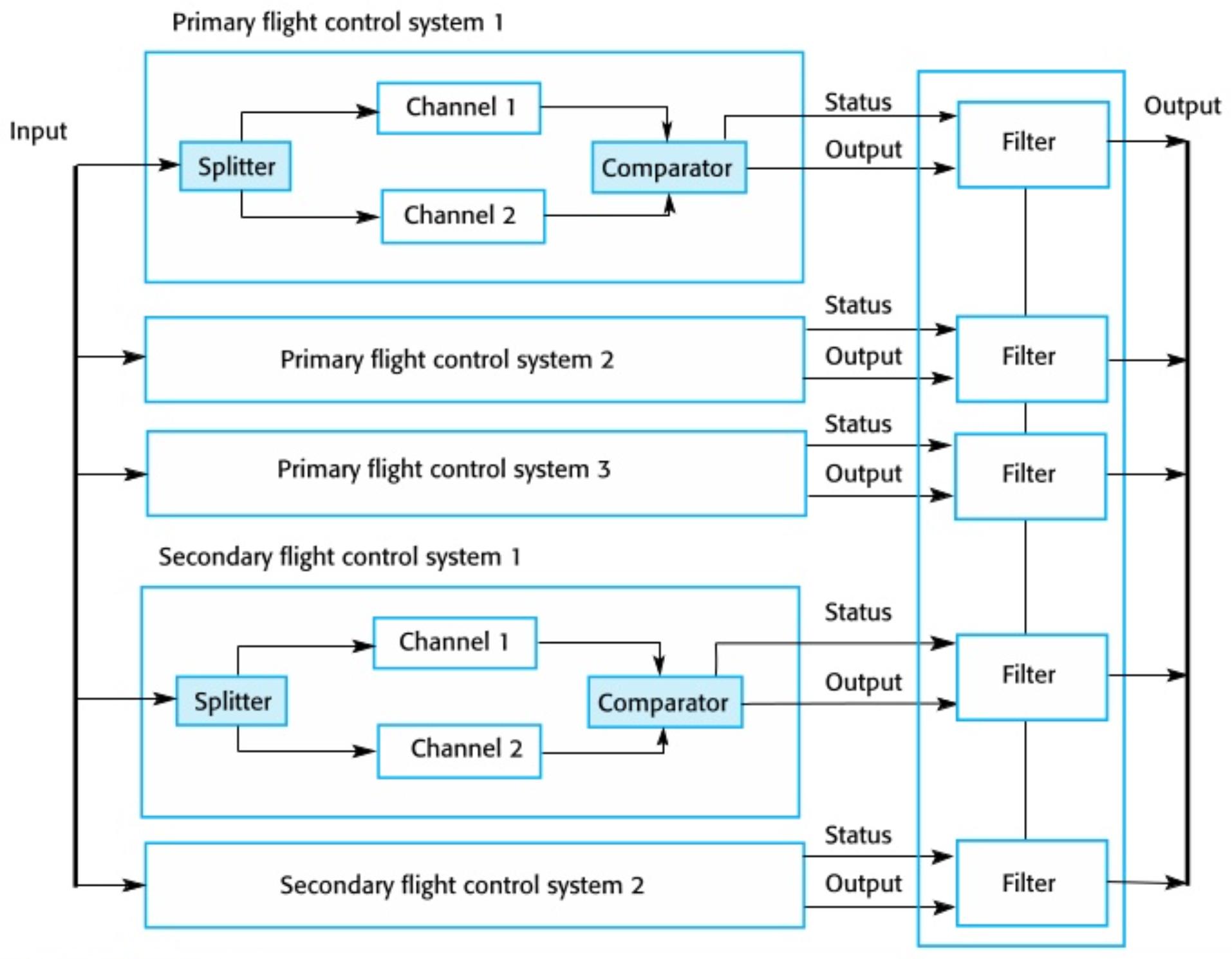I've read about many aircraft systems having redundancies. For example, both Boeing's 787, and Airbus's A380 have a triple-redundant FCS. In this case, it makes sense to act upon the majority's decision. If all three components disagree, how is it decided which one wins? Is there any record of disagreement amongst redundant systems in airplanes?
The primary differences I have compared to the question about Airbus's control systems (How does the Airbus flight computer's voting system work?), is verification for non-deterministic systems, as well as optics for visibility. Given that the entire systems run in parallel up until the verification component (from sensor input, onwards), there will be some, obvious delta in their "decisions." -- Although, most of the time, this isn't perceivable, is there any visibility into what's going on with the FCS?


